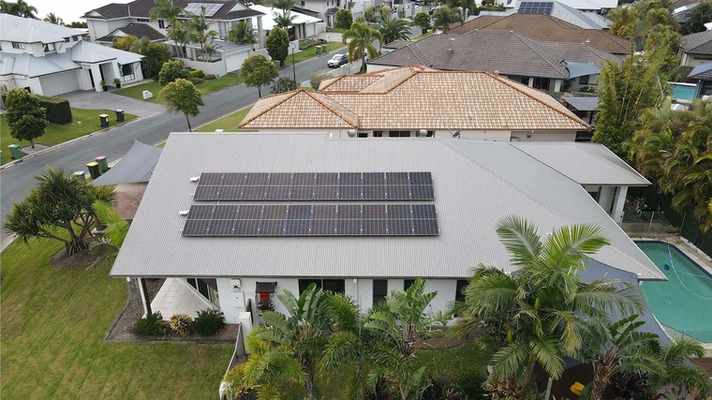
Switching to solar energy is a big decision for homeowners, and the potential for long-term savings and environmental benefits is significant. However, like any other major investment, maximizing the return on your solar system requires careful planning and ongoing maintenance. From choosing the right equipment to leveraging financial incentives, understanding how to get the most from your solar setup is crucial.
In this comprehensive guide, we’ll explore various strategies to ensure that you get the most out of your solar investment. Whether you're just starting to explore the possibility of solar energy or you're already reaping the rewards, these expert tips will help you maximize your savings, efficiency, and impact on the planet.
Maximizing your solar investment goes beyond merely installing panels on your roof. It involves optimizing your system for the highest possible energy output and financial savings over time. This includes selecting the right solar equipment, ensuring your home is energy-efficient, understanding the financial incentives available, and adopting best practices for maintaining your solar panels. Essentially, maximizing your solar investment means achieving the greatest possible return from your initial expenditure, both in terms of energy savings and environmental impact.
Before diving into solar, it’s important to get a clear picture of your home’s energy needs. Start by analyzing your electric bills over the past year. How much energy do you consume monthly? What times of the year see the highest usage? By understanding these patterns, you can size your solar system appropriately, ensuring it meets or exceeds your household’s demand. Too often, homeowners either under-invest or over-invest in solar capacity, resulting in either lost potential or unnecessary costs.
Once you have a solid understanding of your energy needs, it’s time to size your solar system accordingly. Solar installers typically perform a site analysis, looking at factors like the size of your roof, available sunlight hours, and shading from nearby trees or structures. An oversized system may produce more energy than you need, which could be wasteful if you aren’t able to sell the excess back to the grid. Conversely, an undersized system won’t fully meet your needs, forcing you to continue relying on the grid for power. Proper sizing ensures that you make the most efficient use of both your space and investment.
Not all solar panels are created equal. Homeowners must decide between different types of solar panels—monocrystalline, polycrystalline, or thin-film—each with its own advantages. Monocrystalline panels tend to be the most efficient and durable, though they come at a higher cost. Polycrystalline panels, while slightly less efficient, are more budget-friendly. Thin-film panels are lightweight and flexible but may not be suitable for all residential roofs. Researching and selecting the right panel for your needs can significantly impact your solar system's long-term efficiency and value.
Selecting a reputable, experienced solar installer is essential to the success of your investment. A good installer will not only ensure proper panel placement and system integration, but they will also help navigate local regulations, permits, and potential obstacles such as roof repairs or upgrades. Look for companies with positive customer reviews, certifications from reputable industry organizations, and comprehensive warranties that cover both labor and equipment.
One of the biggest reasons homeowners switch to solar is the potential for cost savings. But how do these savings compare to traditional energy sources? While solar installation costs have dropped significantly in recent years, they still represent a major upfront expense. However, the ongoing costs of maintaining a solar system are low, and once the system is paid off, your electricity is essentially free. By contrast, relying on the grid means you’ll be subject to fluctuating energy prices and potentially rising costs. Many companies benefit from government incentives and tax credits that make commercial solar panel installation more affordable.
Government incentives can significantly reduce the overall cost of your solar system. In the U.S., the federal government offers a solar Investment Tax Credit (ITC) that allows homeowners to deduct a portion of their installation costs from their taxes. Many states and local governments also offer additional rebates, incentives, or solar renewable energy certificates (SRECs). Familiarize yourself with the programs available in your area to ensure you’re taking full advantage of potential savings. Our australian solar company is dedicated to providing sustainable energy solutions for homes and businesses.
If the upfront cost of solar installation seems prohibitive, there are several financing options to explore. Solar loans allow homeowners to spread out the costs over time, with monthly payments that are often lower than their current electricity bills. Solar leases or Power Purchase Agreements (PPAs) are alternative arrangements where a third party owns the system, and you pay a set rate for the electricity it produces. While these options can make solar more accessible, they also affect the overall savings and return on investment, so it’s important to weigh the pros and cons.
The return on investment (ROI) for solar panels varies depending on factors such as installation costs, energy usage, and local energy rates. On average, most homeowners can expect their solar panels to pay for themselves within 6 to 10 years. After this point, the energy produced is essentially free, and any additional savings go straight into your pocket. Understanding your break-even point can help set realistic expectations for your solar investment.
Maximizing Your Solar Investment means not only understanding the mechanics behind solar energy but also making smart financial and logistical decisions to get the most from your system. By focusing on the tips shared in this guide, homeowners can enjoy significant energy savings, reduce their carbon footprint, and contribute to a more sustainable future.
|
|